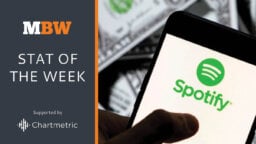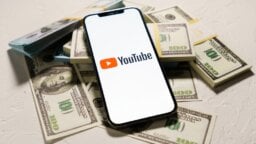The growth of Spotify into the world’s biggest audio streaming service has brought with it some dissention amongst the ranks of artists and songwriters.
The company, which has launched in more than 20 countries (pictured), has now taken the bold step of unveiling a site to explain how it pays creative talent – at least, as much as it can explain within the confines of NDAs and the fact that that individual artists have widely varying deal structures with labels regarding streaming.
The headline figure to come out of Spotify’s new Spotify For Artists site is the per stream payout average, $0.007 (0.006 euros) – although this is a mean average across both ad-funded and premium tiers. The premium-only average, we’re reassured, is ‘significantly higher’.
Spotify, which has long been open about its policy of paying out 70% of its revenues to rightsholders, has now provided a number of mythbusting answers to questions about how – and how much – it contributes to the income of artists and songwriters. MBW has collected the edited highlights below.
How is Spotify contributing to the music business?
By bringing listeners into our free, ad-supported tier, we migrate them away from piracy and less monetised platforms and allow them to generate far greater royalties . Once they are using our free tier, we drive users to our premium subscription tier, at least doubling the amount that they spend on music, from less than $5 per month (the average spent by download consumers in The US) to $9.99 per month for Spotify.
We have succeeded in growing revenues for artists and labels in every country where we operate, and have now paid out over $2 Billion USD in royalties to-date ($500 million of which we paid in 2013 alone). We have proudly achieved these payouts despite having relatively few users compared to radio, iTunes or Pandora, and as we continue to grow we expect that we will generate many billions more in royalties.
How much progress has Spotify made?
Spotify has already made considerable progress towards restoring the value lost to piracy. As of November 2014, Spotify had over 50 million global users. 37.5 million of them were using our free tier, wherein listeners pay for their consumption by viewing and listening to advertisements. And more than 12.5 million Spotify users were paying a $9.99 / £9.99 / €9.99 monthly subscription.

We’ve also successfully grown the amount of money each of our users is worth. By 2013, the amount of money we earn per user (average revenue per user) has grown to $41 per year. This is an average between our premium users who spend $120 per year and our free users who pay for their consumption by viewing and listening to advertising.
The average amount of money spent by US adults on music is $25.. Simply put, a Spotify customer is 1.6x more financially valuable than the average adult non-Spotify US music consumer.
How do you calculate royalties?

1. Spotify Monthly Revenue: The total revenue Spotify makes in a given month from advertising and subscriptions as explained above. This varies from country to country depending on a range of factors including how many users we have in that country, how many of them are premium subscribers and how much advertising we sell.
2. Artist’s Spotify streams divided by total Spotify streams: This calculates an artist’s popularity on the service, their “market share.” Dividing an artist’s streams by the total streams on Spotify determines the percentage of our total pay-outs for an artist.
3. Royalties paid to master and publishing owners: Spotify negotiates our royalty economics with labels and publishers in each territory. Our current payment agreements lead us to distribute approximately 70% of our gross revenues to master recording and publishing rights (both mechanical reproduction and performance) holders. The precise division between these types of rights holders varies by territory in accordance with local laws and negotiated agreements. In the United States, for example, statutes dictate that publishers receive 21% the amount that master recording owners receive.
4. Artist’s royalty rate: Once Spotify has paid a rights owner the total royalties due for their accumulated streams, that label or publisher pays each artist according to that artist’s contractual royalty rates. This will likely also take into account other factors including recoupment status, which is one reason that different artists in different deals might ultimately receive different royalties. Independent artists can retain up to 100% of their royalty payouts from Spotify by using one of our aggregator partners (a small fee may apply).
5. Artist Pay Out: The end royalty paid out to the artist after the rights holder royalty split and any other deductions have been applied.
What about that ‘per stream’ pay out figure?
Of course, it is possible to reverse engineer an effective “per stream” average by dividing one’s royalties by the number of plays that generated them, but this is not how we measure our payouts internally nor is it a reliable yardstick for Spotify’s value to artists.
An artist’s royalty payments depend on the following variables, among others: In which country people are streaming an artist’s music; Spotify’s # of paid users as a % of total users; higher % paid, higher “per stream” rate; Relative premium pricing and currency value in different countries; An artist’s royalty rate.
Recently, these variables have led to an average “per stream” payout to rights holders of between $0.006 and $0.0084 across our tiers.
Again, we personally view “per stream” metrics as a highly flawed indication of our value to artists for several reasons. For one, our growing user population might listen to more music in a given month than the month before (resulting in a lower effective “per stream”), while generating far more aggregate royalties for artists. Theoretically, another service could generate higher effective “per stream” payouts simply by having users who listen to far less music.
How much do you pay artists when compared to other services?
Spotify is paying artists more than 2x the amount that popular video services are paying out (supported by advertising) and significantly more than both online and terrestrial radio services.
Spotify is still a relatively small service, with 50 million users around the World. By contrast, YouTube has 1B users and iTunes has over 575 million users, only about 75 million of whom pay for music. iTunes is also the preferred tool for listening to pirated music, which generates nothing for artists. When Spotify grows to even a fraction of the size of these services, for example to 140 million total users and 40 million paying subscribers, we will increase our total payouts by 5x.
Spotify’s high royalty payments in comparison to these other services means that if all of this streaming activity (from video and radio services) was through Spotify instead, then the amount of royalties generated in the US by streaming activity would more than double from $530m in 2013 (actual streaming royalties across all services) to $1.3bn (if all streaming occurred on Spotify).Music Business Worldwide




